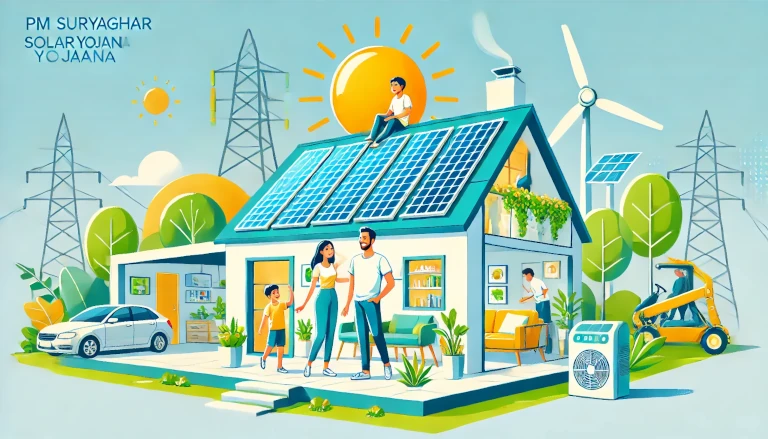The India Agrivoltaics Alliance (IAA) is an initiative aimed at promoting agrivoltaics in India, which combines agriculture with solar power generation on the same land. This alliance brings together policymakers, farmers, industry leaders, and researchers to build a sustainable future where energy production coexists with crop cultivation. Through the India Agrivoltaics Alliance, India can boost food security, meet renewable energy goals, and address climate change by optimizing land use.
What is the India Agrivoltaics Alliance? 🌱🇮🇳
The India Agrivoltaics Alliance is a coalition created to promote agrivoltaics in India. This alliance seeks to encourage the adoption of solar photovoltaic (PV) technology on agricultural land, allowing for dual-use land systems. By supporting research, pilot projects, and farmer engagement, the alliance aims to advance agrivoltaics as a solution for sustainable agriculture and clean energy production.
Why is the India Agrivoltaics Alliance Important? 🌍
With rising energy demands and limited arable land, India faces the challenge of balancing energy production and agriculture. The India Agrivoltaics Alliance plays a crucial role by:
- Boosting Renewable Energy Production: Supporting India’s transition to clean energy by promoting on-farm solar power.
- Increasing Land Use Efficiency: Utilizing farmland for both crops and energy generation, maximizing productivity.
- Reducing Carbon Emissions: Solar energy reduces dependence on fossil fuels, lowering greenhouse gas emissions.
- Enhancing Crop Yield: Shade from solar panels can protect certain crops, improving yields in hot climates.
- Economic Growth for Farmers: Farmers benefit from dual revenue streams—income from both agriculture and solar energy.
How Does the India Agrivoltaics Alliance Work? ⚙️
The alliance functions by bringing stakeholders together to advance agrivoltaics through:
- Research and Development 📊: Supporting R&D in agrivoltaics technology to enhance solar panel design, crop compatibility, and energy generation.
- Pilot Projects and Demonstrations 🚜: Launching pilot projects across India to showcase agrivoltaic systems and educate farmers on their benefits.
- Government Collaboration 🏛️: Working with policymakers to create supportive regulations, subsidies, and incentives for agrivoltaics.
- Farmer Training and Awareness 📚: Conducting workshops and training programs to educate farmers on agrivoltaics systems and how to implement them effectively.
- Industry Partnerships 🤝: Partnering with solar companies and agricultural organizations to drive investment and resource sharing.
Key Benefits of the India Agrivoltaics Alliance 🌱⚡
- Economic Security for Farmers 💰
By generating solar energy, farmers create an additional income stream, providing financial stability and reducing dependency on crop sales alone. - Increased Land Productivity 📈
Agrivoltaics optimizes land use by combining solar production with agriculture, ensuring that valuable farmland serves two essential functions. - Water Conservation 💧
Solar panels reduce water evaporation by providing shade, which conserves water and reduces irrigation needs, particularly in arid regions. - Enhanced Climate Resilience 🌤️
Solar panel shading creates a microclimate that protects crops from excessive heat, promoting growth in extreme weather conditions. - Supporting National Energy Goals ⚡
Agrivoltaics contributes to India’s renewable energy targets, supporting the government’s goals of reducing carbon emissions and increasing clean energy capacity.
Financial Requirements and Cost of Agrivoltaics 💸
Implementing agrivoltaics requires significant investment, depending on the size of the system and location:
- Basic Installation Cost: For a small-scale agrivoltaic system, the cost ranges from ₹5-₹10 lakhs per acre.
- Large-Scale Projects: On larger farms, installation can cost between ₹15-₹25 lakhs per acre, including equipment, mounting, and maintenance.
- Government Subsidies: Many states provide financial support, covering 30-50% of initial costs to make agrivoltaics more affordable for farmers.
- Return on Investment (ROI): ROI for agrivoltaics is typically achieved within 5-10 years, depending on energy production, crop yields, and subsidy support.
The India Agrivoltaics Alliance is also working to reduce financial barriers by collaborating with financial institutions and policymakers to offer low-interest loans, subsidies, and tax incentives for farmers and stakeholders.
Where are Agrivoltaics Projects Being Implemented? 📍
The India Agrivoltaics Alliance is actively supporting projects in various regions, with a focus on areas that benefit most from agrivoltaics:
- Rajasthan and Gujarat: These states have vast solar potential and limited water resources, making them ideal for agrivoltaics.
- Maharashtra and Karnataka: Known for their agricultural productivity, these regions benefit from dual-use systems to support farmers.
- Punjab and Haryana: With high land use for agriculture, agrivoltaics helps farmers generate renewable energy without reducing farmland.
The alliance is expanding into new states each year, demonstrating agrivoltaics’ adaptability across diverse climates and agricultural needs in India.
Limitations and Challenges of the India Agrivoltaics Alliance ⚠️
- High Initial Costs 💰: The high cost of setting up solar systems may discourage small-scale farmers from adopting agrivoltaics.
- Crop Compatibility 🌿: Not all crops thrive under shaded conditions; choosing compatible crops is essential for successful implementation.
- Maintenance Needs 🧹: Solar panels require cleaning and upkeep to maintain efficiency, especially in dusty regions.
- Limited Awareness 📢: Agrivoltaics is still a new concept in many regions, requiring extensive farmer education and outreach.
- Policy Challenges 🏛️: Developing a cohesive policy framework across states is challenging due to regional differences in agriculture and energy needs.
The India Agrivoltaics Alliance addresses these challenges by investing in farmer education, offering incentives, and lobbying for supportive policies to make agrivoltaics a more accessible and attractive solution.
India Agrivoltaics Alliance and the Future of Sustainable Agriculture 🌞🌾
The India Agrivoltaics Alliance stands at the forefront of sustainable development in India, merging agriculture with renewable energy to address food security, economic stability, and environmental resilience. By combining crop cultivation with solar energy production, agrivoltaics optimizes land use and supports India’s goals for clean energy and sustainable agriculture. With ongoing support from policymakers, industry leaders, and farmers, the alliance is well-positioned to make agrivoltaics a mainstream practice in Indian agriculture, paving the way for a greener, more resilient future.
The India Agrivoltaics Alliance is transforming agriculture by merging solar power with farming, creating sustainable solutions for energy and food security in India.
Discover more from Green Ecosystem - Renewable Energy, Agriculture, and Environmental Sustainability
Subscribe to get the latest posts sent to your email.


